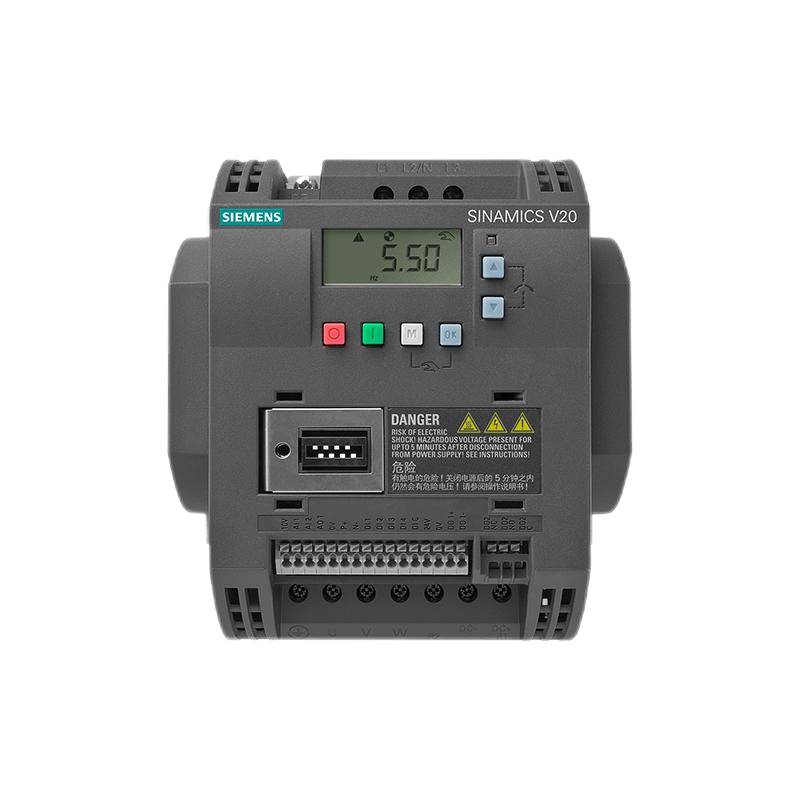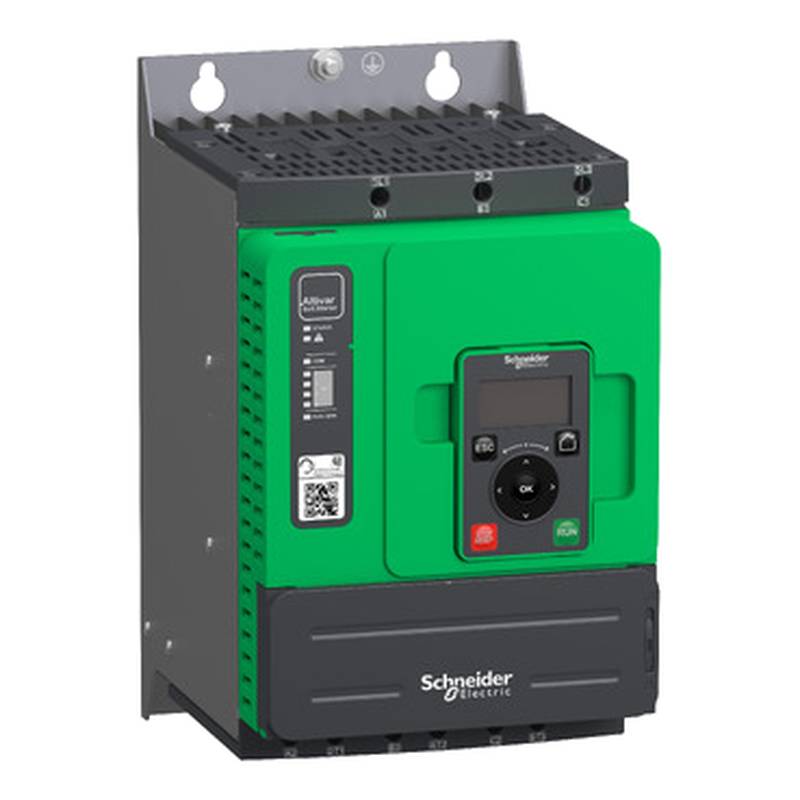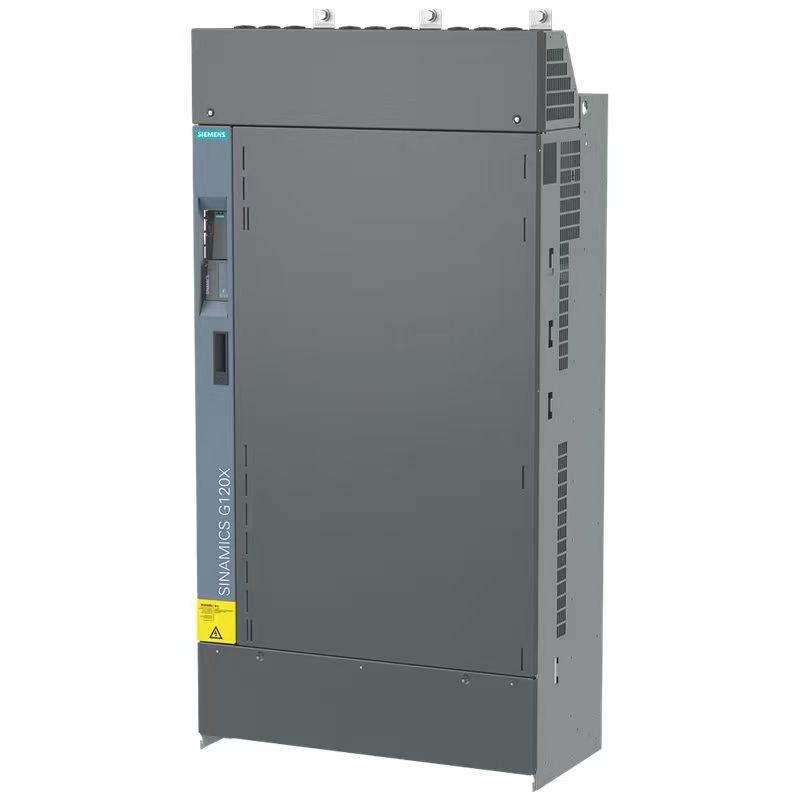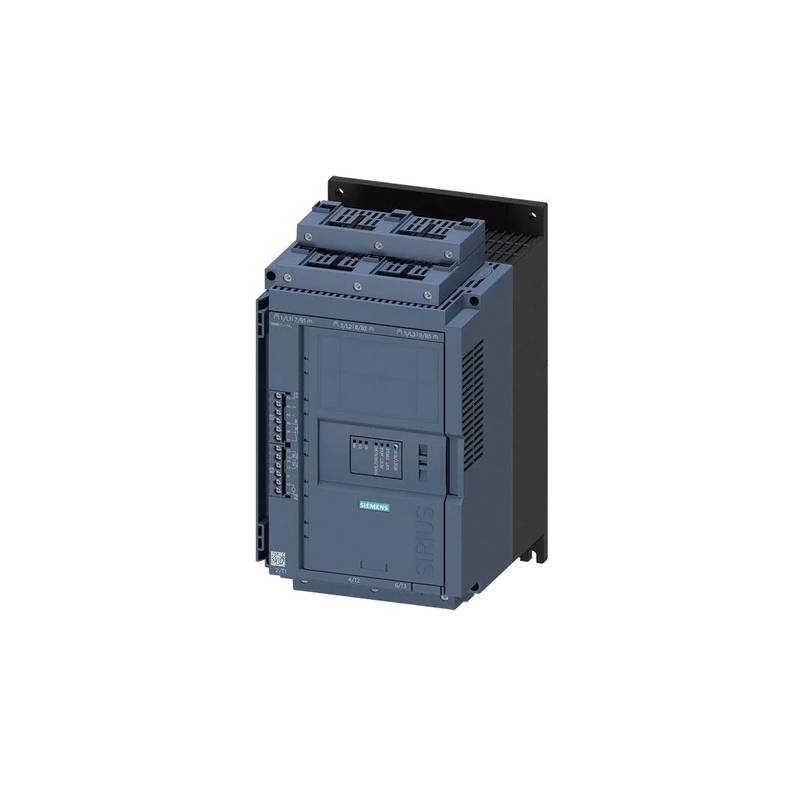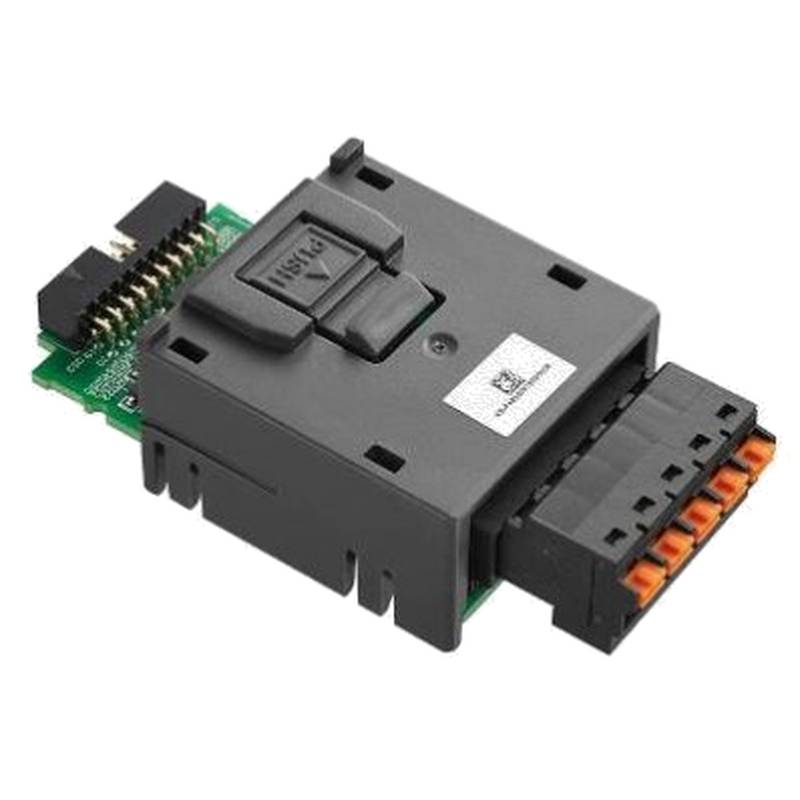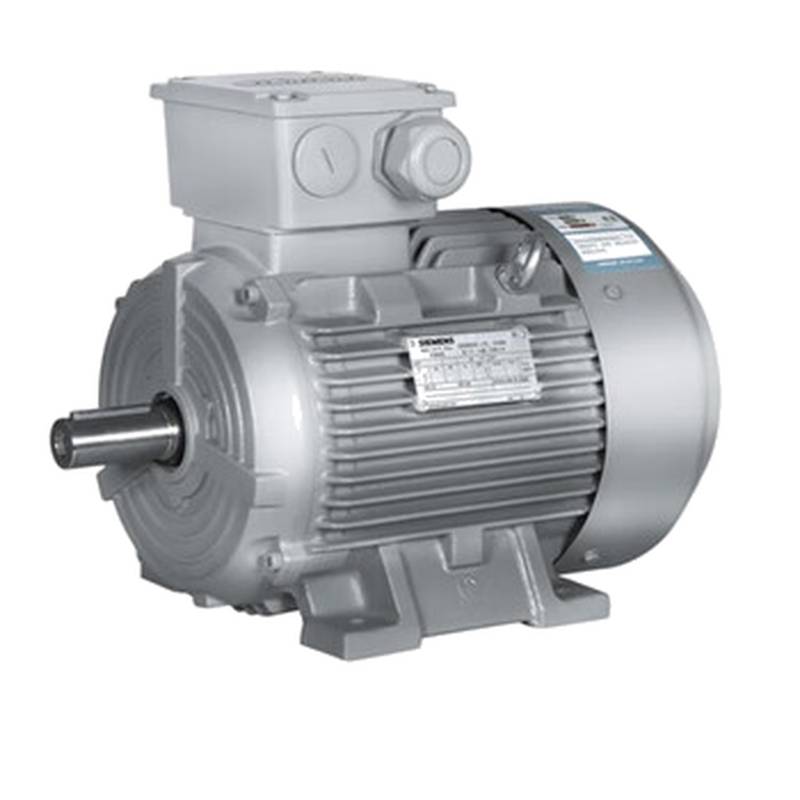
The Siemens 5SY6263-7CC is a robust 2-pole, 63A miniature circuit breaker (MCB) designed for reliable overcurrent protection in a variety of electrical systems. Featuring a C-type tripping characteristic, it offers effective safeguarding against overloads and short circuits, making it suitable for both industrial and residential applications. Its key advantages include a high breaking capacity, compliance with international standards, and the ability to be expanded with auxiliary components for enhanced functionality. The Siemens 5SY6263-7CC is engineered for durability and long service life, embodying Siemens' commitment to quality and safety in electrical distribution.
Product Specifications
| Specification | Value |
| :----------------------------------- | :------------------------------------------------------------------------------------------------- |
| Product Type | Miniature Circuit Breaker (MCB) |
| Manufacturer | Siemens |
| Model | 5SY6263-7CC |
| Number of Poles | 2 |
| Rated Current (Inom) | 63A |
| Rated Voltage (AC) | 230/400V |
| Tripping Characteristic | C |
| Rated Short-Circuit Breaking Capacity | 6 kA (according to EN 60898) / 10 kA (according to IEC 60947-2) |
| Insulation Voltage (Ui) | 440V |
| Overvoltage Category | III |
| Degree of Pollution | 3 |
| Frequency | 50/60 Hz |
| Connection Terminals | Accommodates solid and stranded conductors from 0.75mm² to 35mm² |
| Mounting Type | DIN rail mount (snap-on fixing system) |
| Dimensions (W x H x D) | 36 mm x 90 mm x 76 mm |
| Installation Depth | 70 mm |
| Degree of Protection (IP) | IP20 (with connected conductors) |
| Operating Temperature Range | -25°C to +55°C |
| Standards | IEC/EN 60947-2, IEC 60898, EN 60898 |
Core Features & Market Positioning
The Siemens 5SY6263-7CC stands out in the competitive Miniature Circuit Breaker (MCB) market due to its robust construction and reliable performance, hallmarks of the Siemens SENTRON series. This 2-pole, 63A MCB is engineered for fail-safe short-circuit and overload protection, making it a preferred choice for electrical distribution and control systems in both residential and industrial settings. Its market positioning is further solidified by its compliance with stringent international standards such as IEC/EN 60947-2 and IEC 60898, ensuring global acceptance and trust. The C-type tripping characteristic offers a balanced protection for circuits with moderate inrush currents, differentiating it from breakers with different characteristic curves. Furthermore, its compatibility with a range of auxiliary components, including auxiliary switches and fault signal contacts, allows for system expansion and enhanced functionality, directly addressing the growing demand for intelligent and adaptable electrical infrastructure. This versatility and reliability contribute to its strong standing in a market that increasingly prioritizes safety, efficiency, and long-term value.
Key Application Scenarios
The Siemens 5SY6263-7CC miniature circuit breaker is a versatile protective device with a broad range of applications. Its robust design and specific tripping characteristics make it ideal for safeguarding electrical installations in residential buildings, ensuring the safety of household circuits for lighting and appliances. In commercial environments, it effectively protects power distribution boards, control cabinets, and electrical systems within offices, retail spaces, and other public facilities. For industrial applications, the 5SY6263-7CC is employed in plant engineering and machinery control, protecting circuits from overloads and short circuits that could lead to equipment damage or operational downtime. Its two-pole configuration is particularly suited for single-phase circuits or for applications requiring the simultaneous disconnection of two conductors, such as in specific control circuits or distribution panels where neutral conductor switching is not required. The 63A rating makes it suitable for circuits with higher current demands, commonly found in larger residential or small to medium industrial machinery.
Practical System Integration Guidance
Integrating the Siemens 5SY6263-7CC into existing electrical systems is straightforward due to its standard DIN rail mounting capabilities and user-friendly terminal design. The MCB features combined terminal blocks at both the top and bottom, accommodating a wide range of conductor cross-sections from 0.75 mm² to 35 mm² for solid or stranded wires, and up to 25 mm² for finely stranded conductors with end sleeves. This flexibility simplifies wiring and reduces installation time. For commissioning, ensure that the power supply is de-energized before making any connections. The terminals require a tightening torque between 2.5 and 3.5 Nm for secure connections. The "C" type tripping characteristic is suitable for circuits with moderate inrush currents, commonly encountered with inductive loads like motors or transformers. For systems requiring enhanced monitoring or remote control, the 5SY6263-7CC readily accepts additional components such as auxiliary switches (AS), fault signal contacts (FC), shunt trips (ST), or undervoltage releases (UV), which can be easily attached to the side of the breaker. This modularity allows for future system expansion without requiring a complete replacement of the MCB.
Operation and Risk Mitigation
Safe operation of the Siemens 5SY6263-7CC MCB relies on understanding its function and adhering to safety protocols. As an electro-mechanical device, it combines thermal overload protection (delayed tripping) with magnetic short-circuit protection (instantaneous tripping). The trip-free mechanism ensures that the breaker will always trip open, even if the handle is held in the ON position, preventing unsafe conditions during faults. The IP20 protection rating indicates that it is protected against solid objects larger than 12.5 mm, but it is not suitable for operation in environments with dust or water ingress without additional enclosure. To mitigate risks, always ensure that installation and maintenance are performed by qualified personnel who understand electrical safety procedures. Before performing any work, verify that the circuit is de-energized and use appropriate personal protective equipment (PPE). Loose connections are a common cause of arcing and potential failure; therefore, ensure terminals are tightened to the specified torque. Regular visual inspections for any signs of damage, such as cracks or discoloration, are recommended. In the event of a trip, investigate the cause of the fault (overload or short circuit) before resetting the breaker.
Scalability & Long-Term Value
The Siemens 5SY6263-7CC MCB offers significant long-term value and scalability through its integration capabilities and Siemens' commitment to product compatibility. The modular design of the SENTRON series allows for the easy addition of supplementary devices, such as auxiliary switches, fault signal contacts, shunt releases, and undervoltage releases, which can enhance system monitoring, diagnostics, and operational flexibility without replacing the core breaker. This extensibility ensures that the protection system can adapt to evolving operational requirements or increased loads over time. Furthermore, Siemens' broad portfolio of low-voltage components means that the 5SY6263-7CC is designed to integrate seamlessly with other Siemens products and systems, facilitating upgrades or expansions within an existing Siemens electrical infrastructure. This compatibility reduces the total cost of ownership and ensures a cohesive, reliable electrical system over its lifespan, aligning with industry trends towards smart grids and IIoT integration through the potential use of connected accessories.
Frequently Asked Questions
1. What is the primary function of the Siemens 5SY6263-7CC Miniature Circuit Breaker?
The primary function of the Siemens 5SY6263-7CC is to protect electrical circuits from overcurrent conditions. This includes both overloads, which occur when a circuit draws more current than it is rated for over a period, and short circuits, which involve a sudden, high surge of current.
This electro-mechanical device acts as an automatic safety switch. It interrupts the flow of electricity when it detects an abnormal current, thereby preventing damage to electrical equipment, wiring, and reducing the risk of electrical fires. Its reliable operation is crucial for maintaining the safety and integrity of electrical installations in various environments.
By interrupting the circuit during fault conditions, the 5SY6263-7CC safeguards connected appliances and machinery. It also protects the electrical infrastructure itself from potential damage, ensuring operational continuity and reducing maintenance costs associated with electrical faults.
2. What are the key technical specifications of the Siemens 5SY6263-7CC?
The Siemens 5SY6263-7CC is a 2-pole, 63-ampere miniature circuit breaker. It operates with a C-type tripping characteristic, suitable for circuits with moderate inrush currents.
It is designed for a rated voltage of 230/400V AC and features a breaking capacity of 6 kA according to EN 60898 standards, and 10 kA according to IEC 60947-2 standards. The insulation voltage (Ui) is rated at 440V.
The device supports conductor cross-sections from 0.75mm² to 35mm² and is designed for DIN rail mounting. It has an IP20 protection rating and operates within an ambient temperature range of -25°C to +55°C.
3. In which types of applications is the Siemens 5SY6263-7CC typically used?
The Siemens 5SY6263-7CC is widely utilized in residential buildings for protecting circuits in homes and apartments. This includes general lighting, socket outlets, and circuits for common appliances.
In commercial settings, it is employed in distribution boards for offices, retail outlets, and other public facilities. It provides essential protection for power distribution systems, control cabinets, and electrical equipment within these environments.
For industrial applications, this MCB is suitable for plant engineering and machinery control. It offers reliable protection against overloads and short circuits for various industrial equipment and electrical networks, ensuring operational safety and equipment longevity.
4. What does the "C" in the 5SY6263-7CC designation signify regarding its tripping characteristic?
The "C" in the tripping characteristic (C-curve) of the Siemens 5SY6263-7CC indicates that it is designed to trip between 5 to 10 times its rated current (63A) in case of a short circuit. This characteristic makes it suitable for circuits where there might be moderate inrush currents.
This type of tripping curve is commonly used for circuits powering inductive loads, such as electric motors or transformers, which can draw a temporary higher current upon activation. The C-curve provides a balance between protection against short circuits and preventing nuisance tripping from these normal inrush currents.
Compared to a B-curve breaker, a C-curve breaker offers higher short-circuit tripping thresholds, making it more robust for applications with devices that have higher starting currents. However, it is less sensitive to very low overloads than a B-curve breaker.
5. Can auxiliary devices be connected to the Siemens 5SY6263-7CC?
Yes, the Siemens 5SY6263-7CC is designed to be expandable with a range of auxiliary devices. These can include auxiliary switches (AS), fault signal contacts (FC), shunt trips (ST), and undervoltage releases (UV).
These accessories are typically mounted on the side of the MCB and can enhance its functionality significantly. For example, auxiliary switches can provide status feedback about the breaker's position (ON/OFF/tripped) to a control system.
Fault signal contacts can alert maintenance personnel to a tripped breaker, while shunt trips and undervoltage releases allow for remote or conditional tripping of the breaker, crucial for safety and control in complex systems.
6. What is the breaking capacity of the Siemens 5SY6263-7CC, and why is it important?
The Siemens 5SY6263-7CC has a breaking capacity of 6 kA according to EN 60898 standards and 10 kA according to IEC 60947-2 standards. The breaking capacity is the maximum fault current that the circuit breaker can safely interrupt without being damaged.
A higher breaking capacity is crucial for installations where higher short-circuit currents are possible, such as in industrial facilities or near main power sources. It ensures that the breaker can safely interrupt a fault without failing or causing further damage to the electrical system.
Choosing an MCB with an adequate breaking capacity for the specific installation is a critical safety requirement. An undersized breaker could fail catastrophically during a fault, leading to severe damage, fire, or injury.
7. What standards does the Siemens 5SY6263-7CC comply with?
The Siemens 5SY6263-7CC complies with several key international standards for miniature circuit breakers. These include IEC/EN 60947-2, which pertains to low-voltage switchgear and controlgear, specifically circuit-breakers, and IEC 60898 and EN 60898, which cover circuit-breakers for household and similar installations.
Compliance with these standards ensures that the product meets rigorous safety, performance, and reliability requirements. It also facilitates its use and acceptance in various global markets and applications, providing users with confidence in its protective capabilities.
Adherence to these standards ensures product interoperability and consistency across different manufacturers and systems. It also signifies that the Siemens 5SY6263-7CC has undergone thorough testing and certification processes.
8. How is the Siemens 5SY6263-7CC installed, and what are the connection requirements?
Installation of the Siemens 5SY6263-7CC is typically done by snapping it onto a standard 35mm DIN rail, a common mounting standard in electrical distribution boards. The device is designed with combined terminals at both the top and bottom for easy wiring.
The terminals are suitable for conductor cross-sections ranging from 0.75 mm² to 35 mm² for solid and stranded wires. For finely stranded conductors with end sleeves, the maximum size is 25 mm². Secure connections are ensured by tightening the terminal screws within a torque range of 2.5 to 3.5 Nm.
Before installation or any electrical work, it is imperative to ensure the power supply to the circuit is completely de-energized. Installation and connection should only be performed by qualified electricians to guarantee safety and compliance with electrical codes.
9. What is the operational lifespan and expected durability of the Siemens 5SY6263-7CC?
The Siemens 5SY6263-7CC is built to Siemens' high standards for durability and long service life, often specified with a mechanical service life of 10,000 operating cycles according to some data sheets. However, electrical service life can be significantly lower depending on the frequency and magnitude of fault currents it interrupts.
The operational lifespan is influenced by factors such as ambient temperature, load conditions, and the number of trip events. Regular inspections and maintenance can help ensure optimal performance and longevity.
Siemens products are generally known for their reliability and robustness, designed to withstand typical environmental conditions encountered in electrical installations. Proper installation and avoiding operation outside its specified parameters will maximize its service life.
10. How does the Siemens 5SY6263-7CC contribute to electrical safety and system reliability?
The Siemens 5SY6263-7CC significantly enhances electrical safety by providing reliable overcurrent protection, preventing hazards like electrical fires and equipment damage caused by overloads or short circuits. Its trip-free mechanism ensures it will always disconnect power during a fault, even if manually overridden.
Its compliance with international safety standards (IEC/EN) assures users of its dependable performance. The clear C-type tripping characteristic allows for appropriate protection in circuits with moderate inrush currents, minimizing nuisance tripping while still offering robust fault protection.
By using this MCB, system designers and installers ensure that their electrical systems meet safety regulations and offer a high degree of reliability. The option to add accessories further allows for advanced monitoring and control, contributing to overall system integrity and operational continuity.
















